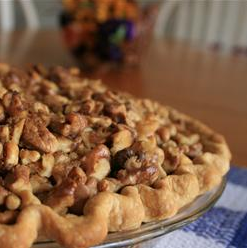The Effects of Candy on the Body
Most people like to indulge in a candy bar now and then, but doing so regularly has negative effects on your health. Sweets often contain no nutrients, making them empty calories that contribute to health problems. About $2 billion is spent on candy each year at Halloween alone!
Issues stemming from to much candy or sugar:
Weight gain – is one of the effects that candy has on the body. The ingredients used to make candy are full of calories, sugar, chocolate, caramel, nuts and nougat are several examples of ingredients used to make candy that are high in calories. Eating too many calories every day results in weight gain if you cannot burn them off. An average of 40 percent of the sugar people consume is stored in the body as fat, reports Evolving Wellness. To keep weight under control and still enjoy candy, choose “fun-size” versions and stick to one piece. A king-size Snickers bar has 54 g of sugar and 510 calories, while one Reese’s Peanut Butter cup only has 10 g of sugar and 115 calories.
*Nutrient deficiencies*- if you are filling up on candy, you leave little room for nutrient-dense foods that support your health. Candy contains no vitamins and very small, if any, amounts of minerals, which means you are satisfying hunger but doing nothing to meet your daily nutrient intake requirements. This contributes to the development of nutrient deficiencies, including iron, vitamins A and C, and calcium, which results in a variety of health problems, including anemia and a lowered immunity.
Tooth decay – is a surprise but it’s caused by too much candy! Eating too much candy leads to the development of cavities. Sugar plays a large role in this process. Bacteria that causes cavities feeds on sugar. The more sugary candy you eat, the more this harmful bacteria is able to multiply and damage your teeth. Evolving Wellness notes that eating a lot of candy also plays a role in bleeding gums, losing teeth, leading to corrosion and deterioration. Caramel, taffy and other chewy candies stick to teeth, eroding the enamel and leading to decay.
The American Heart Association explains that sugar intake should be limited to no more than half of your discretionary allowance, which is roughly 100 calories or 6 teaspoons a day for women, or 150 calories or 9 teaspoons a day for men. There are some natural alternatives you can eat that have no added sugar, such as raisins and dates mixed with nuts or dried fruit. Be aware that even though these products have no added sugar, they are still high in sugar content, especially dried fruits that are condensed.
For Halloween or any Occasions enjoy the goodies, such as 3 “fun-sized” chocolate bars on Halloween.The rule that many people follow is “everything in moderate” which means not depriving yourself not over doing it!
Happy Halloween!
Pumpkin Pie

Ingredients
- 1 (15 ounce) can pumpkin puree
- 1 (14 ounce) can sweetened condensed milk
- 2 egg yolks
- 1 teaspoon ground cinnamon
- 1/2 teaspoon ground ginger
- 1/2 teaspoon ground nutmeg
- 1/2 teaspoon salt
- 2 egg whites
- 1 (9 inch) unbaked pie shell
- 2 tablespoons all-purpose flour
- 1/4 cup packed brown sugar
- 1 teaspoon ground cinnamon
- 2 tablespoons butter, chilled
- 1 cup chopped walnuts
Instructions
- Preheat the oven to 425 degrees F (220 degrees C).
- In a large bowl, mix together the pumpkin, sweetened condensed milk, and egg yolks. Stir in 1 teaspoon cinnamon, ginger, nutmeg, and salt. In a large glass or metal bowl, whip egg whites until soft peaks form. Gently fold into pumpkin mixture. Pour filling into pie shell.
- Bake for 15 minutes in the preheated oven. While the pie is baking, prepare the streusel topping: In a small bowl, combine the flour, brown sugar, and 1 teaspoon cinnamon. Blend in the cold butter with a fork or pastry blender until the mixture is crumbly. Mix in the chopped nuts. Sprinkle the topping over the pie.
- Reduce the heat to 350 degrees F (175 degrees C). Bake an additional 40 minutes, or until set.
Calf Stretch

A) Stand at arm’s length from a wall or a piece of sturdy exercise equipment.
(B) Place your right foot behind your left foot.
© Slowly bend your left leg forward, keeping your right knee straight and your right heel on the floor.
(D) Hold your back straight and your hips forward. Don’t rotate your feet inward or outward.
(E) Hold for about 30 seconds.
(F) Switch legs and repeat.
Tip: To deepen the stretch, slightly bend your right knee as you bend your left leg forward.





